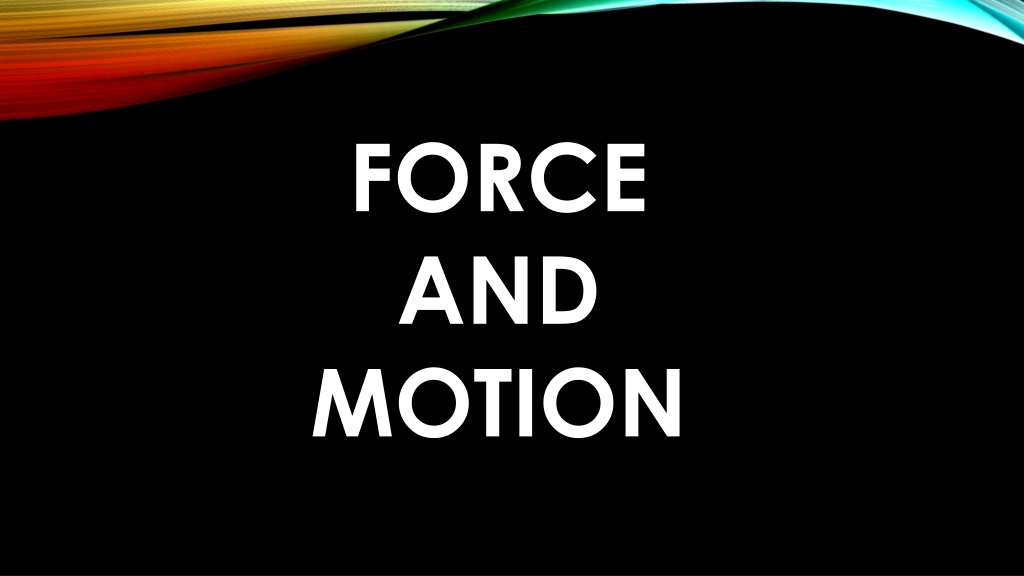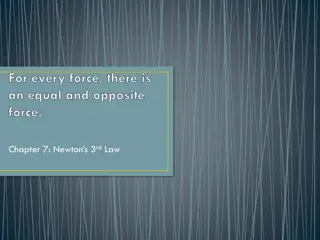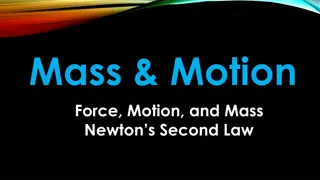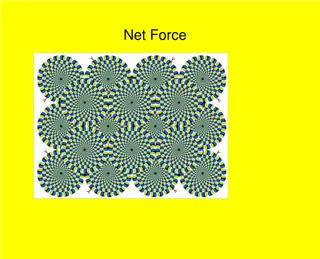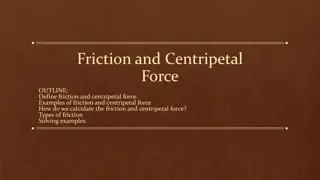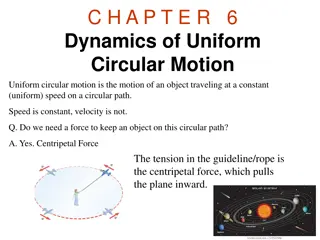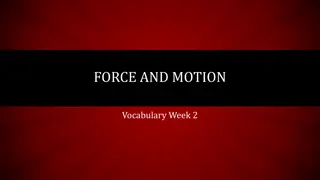Understanding Force and Motion in Science
Explore the concepts of force and motion in this educational content. Dive into topics like position, reference points, distance, and measuring motion. Understand the basics of motion and how it relates to everyday experiences, such as traveling from home to school. Enhance your knowledge of these fundamental scientific principles through engaging discussions and visual aids.
Download Presentation

Please find below an Image/Link to download the presentation.
The content on the website is provided AS IS for your information and personal use only. It may not be sold, licensed, or shared on other websites without obtaining consent from the author. Download presentation by click this link. If you encounter any issues during the download, it is possible that the publisher has removed the file from their server.
E N D
Presentation Transcript
FORCE AND MOTION
Notes Write down the words in yellow. The words in white are discussion points, you may write these down, but are not required.
Motion Which way do you travel from home to school? How far do you go to get to school? How fast could you go if you rode your bicycle to school? How much faster can a car or bus go? * Turn to your shoulder partner and discuss.
Position Position is the location of an object. You describe an object s position by saying where it is compared with another object. Think about riding in a car. Suppose you see a grocery store ahead of you. You ride by the store. Then the store is behind you. The store has not moved, of course. You have. Your position has changed compared with the position of the store.
Position A reference point is any object that is not moving and can be used to describe the position of another object. The grocery store was an example of a reference point. A tree, a desk, a street sign, or a line on the road might be a reference point. Once you choose a reference point, you can describe position in terms of distance from the reference point.
Distance Distance is the length of a line between two points. For example, your chair might be a distance of 8 cm behind your desk, the reference point. If you move the chair, it s distance from the reference point changes.
Motion Motion is a change in an object s position. It is another word for movement. When an object is in motion, its position changes. An object stays in motion as long as its position keeps changing. Think about riding a bicycle. The bicycle is in motion as long as it keeps moving along the bike path. The bicycle s position changes as you ride along. Now suppose you stop at a mailbox. The bicycle is no longer in motion. Its position does not change while you are stopped.
Measuring and Describing Motion You can measure motion. If an object moves in a straight path, you can use a meter stick (or yardstick) to measure how far an object moves. You can use a stopwatch, watch, or clock to measure the time during which an object is moving A stop watch is a good tool for measuring time in minutes and seconds. Time can also be measured in hours.
Measuring and Describing Motion You can also describe motion. You can describe it with words that tell direction. Direction is the path that a moving object follows. A compass is used to find direction. You describe it as north, south, east, or west. You can also describe direction with words such as: right, left, toward, and away from.
Speed You can also measure the motion of an object based on the distance the object travels in a certain amount of time. Speed is a measure of how far an object moves in a certain amount of time. Speed describes how fast or slowly an object moves. An object with a higher speed moves faster than an object with a lower speed.
Speed You might be able to ride your bicycle a distance of 8 kilometers in 1 hour, so that it would have a speed of 8 kilometers per hour. A car can go much faster. A car on a highway might have a speed of 100 kilometers per hour. Earth s motion is very fast. It rotates at a speed of more than 1000 kilometers per hour.
Speed To find an object s speed, you must know the distance, or how far, the object moves. You must also know the time, or how long, the object is moving. To calculate speed, you divide the distance by time. Speed = Distance/Time
Speed Suppose a ball rolls a distance of 10 meters in 5 seconds. You can find the ball s speed by dividing distance by time. Speed = Distance/Time = 10 meters/5 second = 2 meters per second
Speed In this example, the unit for speed is meters per second. The ball moved 2 meters during every second it was rolling. Some other units for speed are kilometers per hour and miles per hour.
Speed Suppose two cars are in motion for the same amount of time. The speed of Car 1 is greater than the speed of Car 2, so Car 1 will move farther than Car 2. In other words, a faster object travels a greater distance than a slower object in the same amount of time. Now suppose the two cars are traveling the same distance. If they start at the same time, Car 1 will cover the distance sooner. A faster object travels the same distance in less time than a slower object.
Exit Ticket All Write Round Robin 1) What is motion? 2) In what ways can motion be measured? 3) How can you determine speed? 4) What is the definition of distance?
